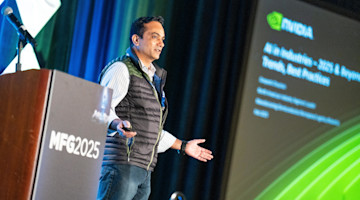Manufacturers will need a whopping 3.8 million employees by the year 2033 to fill growth and replace retirees. Due to a skills mismatch between job seekers’ skills and the skillsets needed by industry, only about half of those employees are expected to be found. The unfilled jobs will come with an estimated $1 trillion price tag in 2030 alone. This strikes at the heart of U.S. global competitiveness and the U.S. economy, as manufacturers become unable to expand capabilities and acquire new work.
The workforce crisis requires a coordinated effort to prepare tomorrow’s change-makers to effectively close the skills gap. Let’s explore the pathway between education, training, and the future of work.
So, What’s the Problem?
The unprecedented speed of technological developments that require new skills to fill advanced roles have outpaced many traditional educational institutions.
Recruitment and retention are huge hurdles that must be cleared. In a recent study conducted by the Manufacturing Institute and Deloitte, 65% of respondents stated that attracting and retaining talent is their primary challenge.
Widespread misperceptions continue about manufacturing careers, including that they are low-paying and are the labor-intensive work of yesteryear. On the contrary, the fastest-growing new-collar careers are in clean energy, aerospace, automation, and semiconductors, all of which require digital skills, soft skills, and high-level technical skills.
A “silver tsunami” is giving rise to quality and productivity issues as retiring baby boomers take their expertise and institutional knowledge with them more quickly than skilled replacements can be found.
Finally, the gap between education and work hinges on a wider awareness and acceptance of credentials and skills-based training that effectively link education to industry needs. Let’s dig deeper into the education-to-workforce connection.
College for All Is Broken
The American concept of college for all is collapsing under massive student debt and underemployed degree-holders. American confidence in higher education has plummeted to 36% today from 48% in 2018 and 57% in 2015.
Our rapidly changing digital age demands flexible learning for emerging skillsets that meet evolving industry needs. Traditional higher education models (where getting an education early in life to prepare for a lifetime of work) are no longer sustainable. College for all is an antiquated notion.
The Change-Makers: Gen Z
Gen Z, the youngest generation in today’s workforce, are beginning to calculate the risk of going to a four-year college. College was a logical choice for middle-class Americans when all fields of study led to earning potential that made economic sense. But as college costs skyrocket, that four-year degree equation has become a little dicey. The value of a college degree is now highly dependent upon the field of study and skills learned.
On the upside, community colleges with a focus on vocational programs have made exceptional gains, with a 16% 2023 enrollment increase as compared to 2022. Conversely, community colleges focused on four-year college transfers saw a skimpy a 0.2% increase in enrollment.
Our change-makers will need to up-skill and re-skill throughout their careers to fill evolving new-collar jobs in fields like advanced manufacturing, renewable energy, and environmental technology.
The education-to-work gap will hinge upon the ability of postsecondary education to adapt to the pace of technological advances and shifting industry demands.
The Value of Credentials
Industry-recognized credentials like certifications or apprenticeships are becoming an increasingly popular student pathway to well-paying careers. A recent study of high-school and college-aged people found that 75% would be interested in vocational schools offering paid apprenticeships.
Here’s the masterstroke: Many credentials are stackable, meaning they can build on earlier skills, ultimately leading to an advanced credential or degree. And, industry-recognized credentials help industry and educational institutions align education and workforce development to industry needs.
Follow the Leaders
Not all successful people have followed the traditional “college for all” pathway, including Steve Jobs, Bill Gates, and Richard Branson to name a few famous change-makers. Eighty-nine percent of CEOs without college degrees started out in the same industry where they served as CEO. These change-leaders spent about 40% more time in the industry in contrast to their colleagues with college degrees. Change-makers can reach the C-suite by gaining deep industry-specific knowledge.
Some of our most successful manufacturing industry leaders started out on a nontraditional pathway. For instance, Gisbert Ledvon, vice president of marketing at Heidenhain North America (IMTS booth #339440), began his career with an apprentice certification in 1983 as a tool maker and continued learning throughout his impressive career.
Skills-Based Education and Hiring
Creating a talent pipeline of skilled workers is critical to reshoring and is the No. 1 criterion for U.S. manufacturing site selection. A national mind shift is needed for achieving success by promoting skills-based education and demonstrated proficiency as a pathway to the high-paying new-collar careers of the future.
U.S. labor market challenges are motivating employers to adopt skills-based hiring. According to a report from JFF (Jobs for the Future), 81% of employers think they should be hiring based on skills rather than degrees. Studies show that companies that use skills-based hiring are 60%more likely to hire successful candidates than those that don’t. According to a recent Harvard Business Review study, this “reset” could have major implications for how employers recruit new talent.
A Word About Diversifying the Manufacturing Workforce
According to the U.S. Bureau of Labor Statistics, the U.S.-born working-age population is shrinking, while the foreign-born working-age population is growing. Foreign-born workers are now driving U.S. job growth. Simply, without immigrants, the U.S. working-age population would shrink.
Labor experts advise that manufacturers would be wise to embrace the high-potential candidate pool available in minority communities. Seventy seven percent of manufacturing companies in the United States recognize diversity as a competitive advantage. In a study of over 800 manufacturing companies, 63% link diversity, equity, and inclusion (DEI) to an increased ability to attract, retain, and develop talent. Prioritizing DEI is central to widening the talent pipeline.
Are You Thinking About Reshoring?
For help, contact me at 847-867-1144 or email me atharry.moser@reshorenow.org. Our main mission is to get companies to do the math correctly using our free online Total Cost of Ownership Estimator® (TCO). By using TCO, companies can better evaluate sourcing, identify alternatives, and even make a case when selling against offshore competitors.






